Added the option to Defragment to the menu when right-clicking on a drive on Windows
On modern versions of Windows, defragmentation is done regularly. But however if you perform manual defragmentation will be more effective.
If you are using Windows versions from Windows Vista to Windows 10, you do not need to defragment the drive manually anymore. This is especially true if you are using a Solid State Drive (SSD - Windows will automatically defragment the drive (if needed) once a week by default at 1:00 am Wednesday. (And it's smart enough to defragment all SSDs).
However, this process requires you to open the computer at the right time or at least have to turn on the computer when in Sleep mode (sleep mode) so that defragmentation takes place. If at that time you turn off your computer because you are not using it, then you will have to manually manipulate the disk defragmentation.
Instead of digging through the tools to do that, why don't you add a defragment command (Defragment command) to the context menu, when right-clicking a drive in File Explorer?

Added the option to Defragment to the menu when right-clicking on a drive on Windows
1. Edit the Registry manually
To add the Defragment command to the right-click menu, you must manipulate it by editing the Windows Registry.
Note:
Registry Editor is a powerful tool that affects your system. Therefore, you should back up the Registry Editor to prevent a bad situation when editing the Registry Editor .
First open the Registry Editor by entering regedit in the Search box on the Start Menu and then press Enter . If the UAC window appears, click Yes to allow changing your computer.
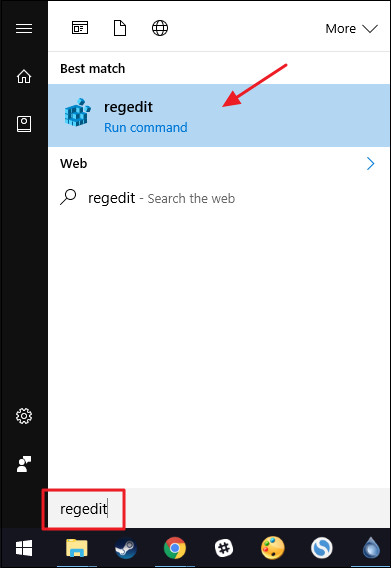
On the Registry Editor window, in the left pane you navigate to the key:
HKEY_CLASSES_ROOTDriveshell
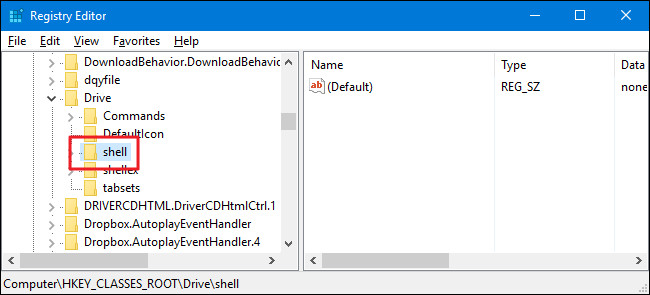
The next step is to create a new key in the Shell key. To do this, right-click the Shell key , then select New => Key . Name this new key " runas ".
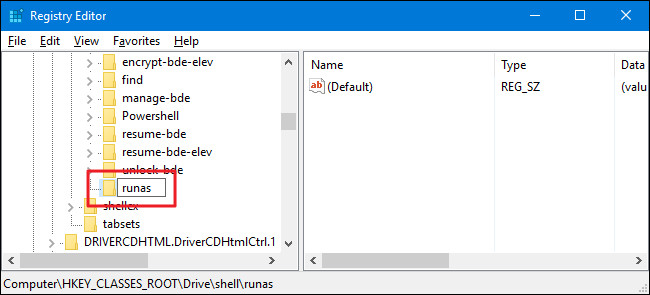
Next, change the value in the new runas key. With the runas key selected, double-click the key to open the Properties window.
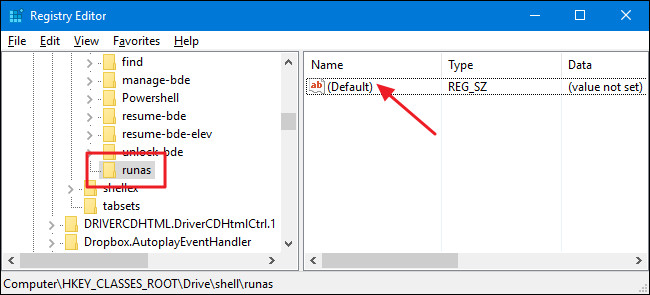
On the Properties window, set the value in the Value data box to Defragment and then click OK . This is to display the Defragment command on the context menu.
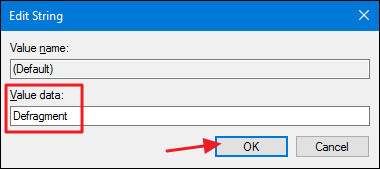
You can also set the Defragment command to display only if you press the Shift key while right-clicking on a drive on the system, similar to the way the Open Command Prompt command is hidden unless you press Shift + click. must go to a certain directory.
To do this, right-click the runas key then select New => String Value . Name this new value Extended . And you don't need to make any changes.
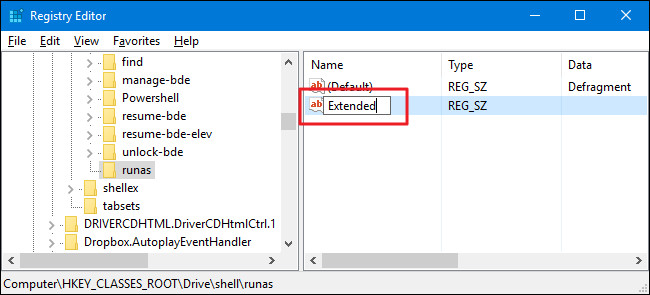
The next step is to create a new key in the runas key. Right-click the runas key and select New => Key . Name this new key as command .
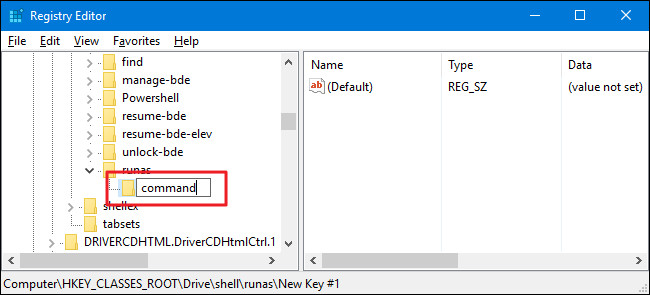
Change the default value in the Command key by double-clicking the key to open the Properties window.
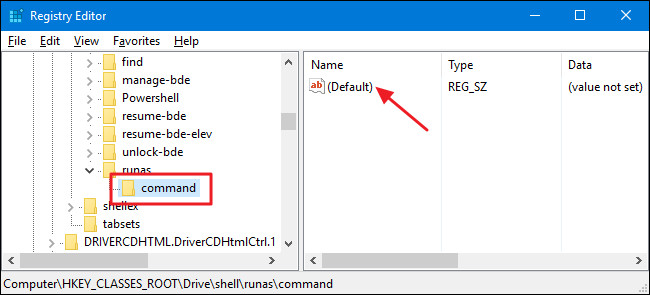
Enter the following command into the Value data box and then click OK :
defrag% 1 –v
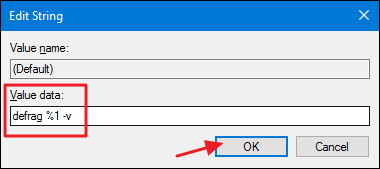
Finally close the Registry Editor window and check by right-clicking (or pressing Shift + right-click if you set this option) on any drive on the system and the Defragment command will display on the menu. scene.
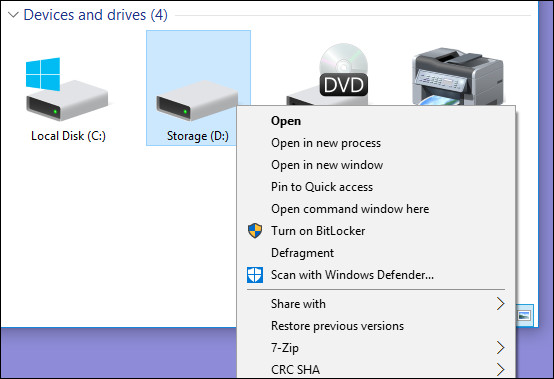
When you run the command, you will see the Command Prompt window appear with the results shown below.
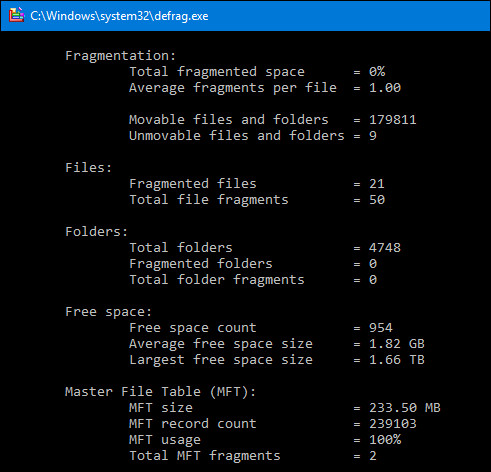
If you want to change the default settings first, simply access the Registry and delete the runas key you created.
2. Use the built-in Registry
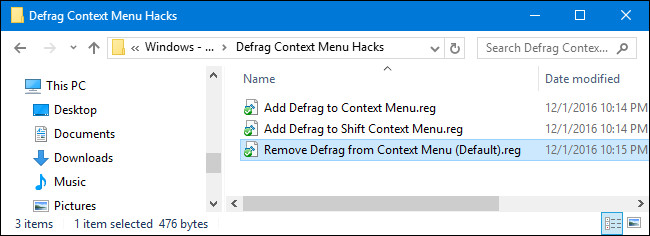
If you don't want to edit the Registry manually, you can use the built-in Registry to add the option to Defragment to the menu when right-clicking on a Windows drive.
Download Defrag Context Menu Hacks on your device and install.
Download Defrag Context Menu Hacks on your device and install here.
Next proceed to extract Defrag file Context Menu Hacks that you download. Now you will see 3 files that Add Defrag to Context Menu to add Defragment command to normal context menu, file ' Add Defrag to Shift Context Menu ' to add defragment command to context menu when you use Shift + click right mouse, and ' Remove Defrag from Context Menu ' file to delete the Defragment command you added.
Refer to some of the following articles:
- Troubleshooting System Restore does not work on Windows 10/8/7
- When and how to defragment hard drives on Windows 10?
- How to speed up the process of copying and moving data on USB drives
Good luck!
You should read it
- How to defragment the Windows 10 hard drive
- When and how to defragment hard drives on Windows 10?
- How to Defrag a hard drive with the Disk Defragmenter function
- How to Defragment a Windows XP Computer
- How to Defragment a Disk on a Windows Computer
- These quality hard drive defragmentation software
- Do you really need to 'defrag' computers?
- How to use Smart Defrag to defragment hard drives effectively
May be interested
- Instructions to remove the All apps option on Windows 10 Start Menu
 on windows 10, start menu is designed quite modern and friendly. in the left pane, users will see some useful programs and quick access options and all apps options. when you click on the all apps option on the start menu, will display all the programs you have installed on the system.
on windows 10, start menu is designed quite modern and friendly. in the left pane, users will see some useful programs and quick access options and all apps options. when you click on the all apps option on the start menu, will display all the programs you have installed on the system. - How to Defrag a Computer
 this wikihow teaches you how to defragment a hard drive, a process that rearranges and better utilizes the space on the drive to improve your pc's performance. though defragmenting a hard drive is not typically advised for mac users, you...
this wikihow teaches you how to defragment a hard drive, a process that rearranges and better utilizes the space on the drive to improve your pc's performance. though defragmenting a hard drive is not typically advised for mac users, you... - 2 simple ways to remove SkyDrive Pro option in Windows 10 Right-click Menu
 when installing microsoft office 2013, by default your context menu (context menu) will appear with skydrive pro option. however, every time you click on any file and folder, this option always appears on the context menu (context menu) that makes you feel uncomfortable.
when installing microsoft office 2013, by default your context menu (context menu) will appear with skydrive pro option. however, every time you click on any file and folder, this option always appears on the context menu (context menu) that makes you feel uncomfortable. - Instructions on how to defragment hard drive phone
 the phone does not have the ability to defragment the hard drive because of certain characteristics, in this article, the software tips will share with you about the problem of hard drive defragmentation on the phone.
the phone does not have the ability to defragment the hard drive because of certain characteristics, in this article, the software tips will share with you about the problem of hard drive defragmentation on the phone. - Fix right-click issue on Windows 10
 in windows 10, you may encounter a problem where right-clicking does not work (or rather, the context menu does not appear). in some cases, right-clicking on the mouse behaves erratically.
in windows 10, you may encounter a problem where right-clicking does not work (or rather, the context menu does not appear). in some cases, right-clicking on the mouse behaves erratically. - How to add the Open Powershell Here option to the context menu on Windows
 to open and use powershell faster and simpler when needed, you can add the 'open powershell here' option to the context menu - the menu when you right-click. in the following article, network administrator will show you how to add the 'open powershell here' option to the context menu on the windows operating system.
to open and use powershell faster and simpler when needed, you can add the 'open powershell here' option to the context menu - the menu when you right-click. in the following article, network administrator will show you how to add the 'open powershell here' option to the context menu on the windows operating system. - Use Disk Defragmenter in Windows
 over time, the files on your hard drive are fragmented and the computer slows down because it has to check multiple locations on the drive. to make your computer run more efficiently, you can use windows built-in tools to defragment those files.
over time, the files on your hard drive are fragmented and the computer slows down because it has to check multiple locations on the drive. to make your computer run more efficiently, you can use windows built-in tools to defragment those files. - How to add items to the 'Create New' context menu in Windows 10
 right-clicking on the desktop or in a folder brings up a list of new file types you can create (under the new menu). but what if the file type you want isn't in windows 10's new context menu?
right-clicking on the desktop or in a folder brings up a list of new file types you can create (under the new menu). but what if the file type you want isn't in windows 10's new context menu? - Instructions to format USB Pendrives with Command Prompt
 by default, windows users can usually format the hard drive, memory card, or usb by right-clicking on it and clicking the format option.
by default, windows users can usually format the hard drive, memory card, or usb by right-clicking on it and clicking the format option. - The Sleep option is missing on Windows Power Menu 10/8/7, this is how to recover
 how to restore the sleep option on the power menu, please refer to the following article of network administrator.
how to restore the sleep option on the power menu, please refer to the following article of network administrator.










 Instructions on how to fix 'The VMware Authorization Service is not running'
Instructions on how to fix 'The VMware Authorization Service is not running' 3 software that shows hidden files in USB should not be ignored
3 software that shows hidden files in USB should not be ignored Change the default Control Panel view to a Windows computer
Change the default Control Panel view to a Windows computer Quick fix Cyclic Redundancy Check error
Quick fix Cyclic Redundancy Check error Instructions to reset Windows Firewall Rules to the initial default state
Instructions to reset Windows Firewall Rules to the initial default state